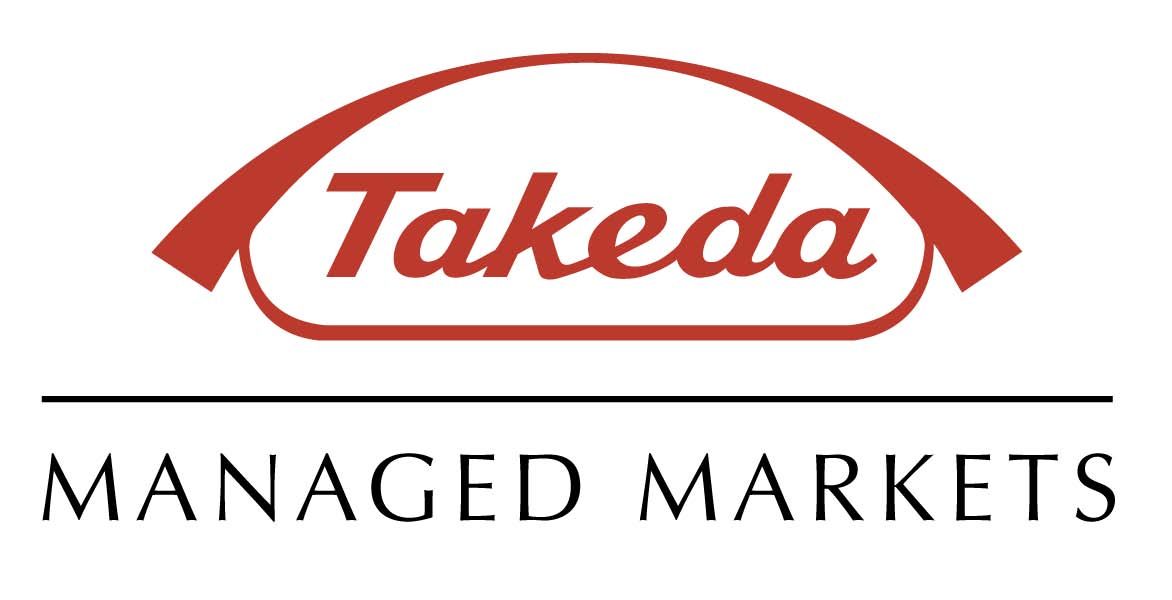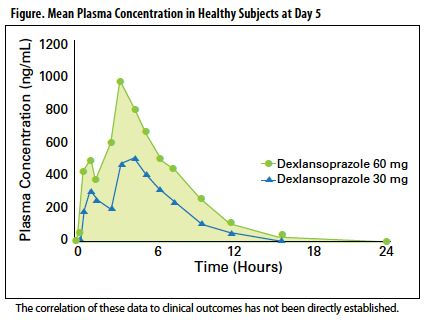Article
A Therapeutic Option for the Management of Gastroesophageal Reflux Disease
Some patients with gastroesophageal reflux disease also experience erosive esophagitis from acid-related mucosal injury, which will require careful treatment.
function divcontrol(){ document.getElementById('div2').style.display = 'none'; document.getElementById('div1').style.display = 'block'; } function divcontrol2(){ document.getElementById('div1').style.display = 'none'; document.getElementById('div2').style.display = 'block'; }
This article was brought to you by


The prevalence of gastroesophageal reflux disease (GERD) in the United States has been estimated at 18.6 million diagnosed cases, based on 1998 research.1 A review of recent studies conducted in US and non-US populations with GERD-related symptoms estimated that approximately 20% to 40% of patients with GERD have erosive esophagitis (EE) from acid-related mucosal injury, whereas 50% to 70% have nonerosive disease.2 According to the National Institutes of Health, the total cost of GERD in 2004 was $12.6 billion; direct costs accounted for $12.1 billion and indirect costs for $0.5 billion.3
GERD is a complex disease process characterized by a disruption in the body’s mechanisms to protect the esophagus from reflux of acid and other gastric contents. It may result from abnormally weak contractions of the lower esophageal sphincter (LES) or from transient LES relaxations, which allow gastric content to flow upward into the esophagus.4,5 GERD is defined by frequent and persistent troublesome symptoms, the most common being heartburn. Some patients have acid-related damage (erosions), such as mucosal breaks or lesions, to the lining of the esophagus known as EE, relating to the abnormal reflux of gastric content.4,5
The majority of patients diagnosed with GERD have the symptoms of GERD, including heartburn, without having EE.4-6 This is known as nonerosive symptomatic GERD. In clinical practice, patients with nonerosive symptomatic GERD are considered a heterogeneous group; the degree to which their symptoms correlate with actual episodes of gastroesophageal acid reflux varies. In addition, symptoms do not always reflect the extent or severity of disease.4,5
Physicians may recommend that patients with GERD implement diet and lifestyle changes such as reducing meal size and fat intake and avoiding trigger foods.4,5,7 Despite diet and lifestyle modifications, symptoms persist in many patients with GERD.7 For those patients, additional evaluation is warranted and pharmacologic therapy may be an option.7
Proton Pump Inhibitors For GERD
The proton pump inhibitor (PPI) class of drugs is the most widely used first-line therapy for GERD. PPIs reduce gastric acid secretion and increase gastric pH by inhibiting the hydrogen-potassium—activated ATPase proton pump, or (H ,K )-ATPase, the enzyme system of the gastric parietal cell that activates gastric acid production and maintains stomach acidity.4,5 PPIs effectively suppress acid secretion and provide EE healing and symptom relief in many patients with GERD.4

DEXILANT
Indications
DEXILANT (dexlansoprazole) 30 mg and 60 mg delayed release capsules are indicated for:
- Healing all grades of erosive esophagitis (EE) for up to 8 weeks8
- Maintaining healing of EE and relief of heartburn for up to 6 months8
- Treating heartburn associated with symptomatic non-erosive gastroesophageal reflux disease (GERD) for 4 weeks8
Pharmacokinetics
Dexlansoprazole is supplied in a dual delayed release (DDR) formulation that includes 2 different types of enteric-coated granules. Dissolution of each granule type is pH dependent.8
The DDR formulation results in a plasma concentration-time curve with 2 distinct peaks. The first peak occurs approximately 1 to 2 hours after administration, and the second peak occurs within 4 to 5 hours (Figure).8 With a single dexlansoprazole capsule, patients receive 2 releases of drug. In healthy subjects, dexlansoprazole has not been observed to accumulate after multiple, once-daily doses of either 30 or 60 mg; following a once-daily dose for 5 consecutive days, mean area under the plasma concentration-time curve and maximum concentration were slightly higher on day 5 than on day 1 (<10%). The half-life of dexlansoprazole is approximately 1 to 2 hours.8

EE Healing
A total of 4092 patients with endoscopically confirmed EE were enrolled in 2 multicenter, double-blind, active-controlled, randomized, 8-week noninferiority studies to evaluate the effects of dexlansoprazole on EE healing. Patients were randomized to once-daily doses including dexlansoprazole 60 mg or lansoprazole 30 mg.8 Results depicted in the Table show the percentage of patients with healed EE at weeks 4 and 8. Noninferiority of dexlansoprazole compared with lansoprazole was demonstrated in both studies, and a finding of superiority was demonstrated in study 2 (Table).8

Healed EE Maintenance
A total of 445 patients with endoscopically confirmed healed EE were enrolled in a multicenter, double-blind, placebo-controlled, randomized study to evaluate healing maintenance and symptom resolution with dexlansoprazole 30 mg over 6 months. Among patients treated with dexlansoprazole 30 mg, 66% remained healed through the 6-month period versus 14% with placebo as confirmed endoscopically.8 Dexilant 30 mg demonstrated a higher median percent of 24-hour heartburn-free days compared with placebo over the 6-month treatment period.
Important Safety Information
- DEXILANT is contraindicated in patients with known hypersensitivity to any component of the formulation. Hypersensitivity and anaphylaxis have been reported with DEXILANT use.8
- Symptomatic response with DEXILANT does not preclude the presence of gastric malignancy.8
- Long-term and multiple daily dose PPI therapy may be associated with an increased risk for osteoporosis-related fractures of the hip, wrist, or spine. Patients should use the lowest dose and shortest duration of PPI therapy appropriate to the condition being treated.8
- Hypomagnesemia has been reported rarely with prolonged treatment with PPIs.8
- Most commonly reported adverse reactions were diarrhea (4.8%), abdominal pain (4.0%), nausea (2.9%), upper respiratory tract infection (1.9%), vomiting (1.6%), and flatulence (1.6%).8
- Do not co-administer atazanavir with DEXILANT because atazanavir systemic concentrations may be substantially decreased. DEXILANT may interfere with absorption of drugs for which gastric pH is important for bioavailability (e.g., ampicillin esters, digoxin, iron salts, ketoconazole). Patients taking concomitant warfarin may require monitoring for increases in international normalized ratio (INR) and prothrombin time. Increases in INR and prothrombin time may lead to abnormal bleeding and even death. Concomitant tacrolimus use may increase tacrolimus whole blood concentrations.8
Please see link to prescribing information for Dexilant below.
Administration Information
Dexlansoprazole can be taken without regard to food. If postmeal symptoms do not resolve, however, some patients may benefit from dose administration prior to a meal.8 In a recent study in healthy subjects evaluating dexlansoprazole administration prior to breakfast, lunch, dinner, or evening snack, dexlansoprazole provided comparable acid suppression when taken at different times of the day.9 The capsule should be swallowed whole. Alternatively, capsules may be opened and the granules sprinkled on a tablespoon of applesauce and immediately swallowed.8 Granules should not be chewed. Do not store for later use.
DEXILANT and DEXILANT (with design) are trademarks of Takeda Pharmaceuticals North America, Inc., registered in the U.S. Patent and Trademark Office and used under license by Takeda Pharmaceuticals America, Inc.
Dual Delayed Release is a trademark of Takeda Pharmaceuticals North America, Inc. and used under license by Takeda Pharmaceuticals America, Inc.
For Full Prescribing Information, click here.
References
1. Sandler RS, Everhart JE, Donowitz M, et al. The burden of selected digestive diseases in the United States. Gastroenterology. 2002;122:1500-1511.
2. Fass R. J Clin Gastroenterol. 2007;41:131-137.
3. Ruhl CE, Sayer B, Byrd-Holt DD, Brown DM. Costs of digestive diseases. In: Everhart JE, ed. The burden of digestive diseases in the United States. US Department of Health and Human Services, Public Health Service, National Institutes of Health, National Institute of Diabetes and Digestive and Kidney Diseases. Washington, DC: US Government Printing Office, 2008; NIH Publication No. 09-6443 pp. 137-147.
4. Saltzman JR, Poneros JM. Gastroesophageal Reflux Disease. In: Greenberger NJ, Blumberg RS, Burakoff R, eds. Current Diagnosis & Treatment: Gastroenterology, Hepatology, & Endoscopy. New York, NY: The McGraw-Hill Companies, Inc; 2009:139-147.
5. Hasler WL. In: Fauci AS, Kasper DL, Longo DL, et al, eds. Harrison’s Principles of Internal Medicine. 17th ed. New York, NY: The McGraw-Hill Companies, Inc; 2008:240-245.
6. Savarino V, Savarino E, Parodi A, Dulbecco P. Dig Dis. 2007;25:172-174.
7. DeVault KR, Castell DO; American College of Gastroenterology. Am J Gastroenterol. 2005;100:190-200.
8. DEXILANT [package insert]. Deerfield, IL: Takeda Pharmaceuticals America, Inc; 2011.
9. Lee RD, Mulford D, Wu J, Atkinson SN. The effect of time-of-day dosing on the pharmacokinetics and pharmacodynamics of dexlansoprazole MR—evidence for dosing flexibility with a Dual Delayed Release proton pump inhibitor. Aliment Pharmacol Ther. 2010;31:1001-1011.
LPD-01770





